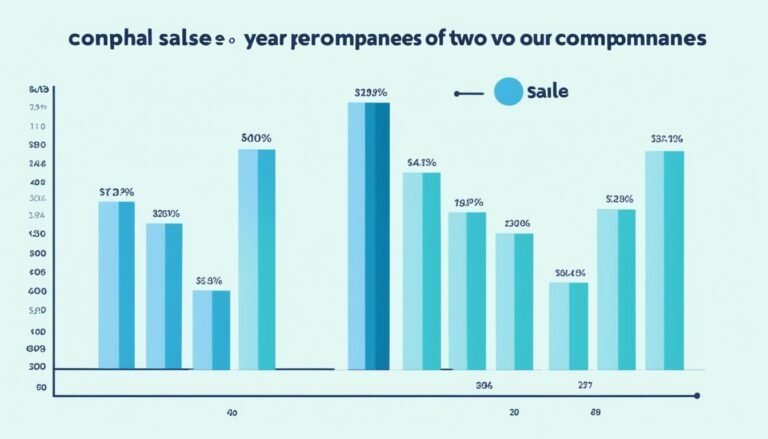Voice Search Optimization: The Next Frontier for E-commerce Success
Imagine a world where finding and buying products is as simple as using your voice. Voice assistants like Alexa, Siri, and Google Assistant are changing online shopping. They make it easier for everyone, including those with disabilities or who don’t know how to search online.
These virtual helpers use natural language and voice commands for a hands-free shopping experience. This technology offers a unique way to shop, making it easier than ever before.
Moving to voice-based shopping isn’t just a trend; it’s the future of e-commerce. It’s about using conversational AI and voice shopping to improve the user experience. Join us as we explore voice search optimization and how your business can use it to grow and reach new customers.
Key Takeaways
- Voice search optimization allows customers to search, navigate, and shop using voice commands.
- Voice commerce offers significant accessibility benefits to people with disabilities.
- Virtual assistants like Alexa, Siri, and Google Assistant provide personalized shopping experiences.
- Optimizing for voice search can broaden your customer base and tap into new markets.
- Voice searches are generally more conversational and longer than traditional search queries.
- Implementing structured data enhances your website’s visibility in voice searches.
- Adapting content for natural language queries is crucial for voice search success.
The Impact of Voice Search on E-commerce
Technology is changing how we shop online with voice-activated devices like Amazon Alexa, Google Assistant, and Apple Siri. These devices make shopping easy with just a voice command. This change is making e-commerce trends shift, affecting how people buy things online.
The Rise of Voice-activated Devices
Voice-activated devices are becoming a big part of our lives. People are using them to shop online, making shopping easier and more accessible. By 2025, over 50% of searches are expected to be done by voice.
This shows a big change, making it crucial for businesses to make their online stores work well with voice commands.
Consumer Preferences and Behavior Changes
Using voice commands to shop is becoming more popular. It shows how shopping habits are changing. People like the ease of using voice commands for shopping and browsing websites.
This change is making e-commerce trends change across different groups of people. It makes shopping easier for those who find it hard with traditional methods. Voice searches often show a higher chance of buying something, which affects how people decide what to buy.
Shopping with voice commands also means e-commerce sites need to be fast, easy to use on mobiles, and secure. As voice search grows, businesses must keep up with what consumers want. They need to make sure their sites offer a smooth and safe shopping experience for everyone.
Understanding Voice Search Optimization
Voice search optimization changes how people use search engines, especially in online shopping. More people use voice-activated devices like Siri, Google Assistant, Amazon Alexa, and Microsoft Cortana. Businesses need to change from old text-based SEO to new strategies for voice search.
This shift means a big change towards talking more with their devices. It’s about making interactions more natural and conversational.
Adapting to Natural Language Processing
Natural Language Processing (NLP) is key to voice search optimization. It lets devices understand and make sense of human speech. For online stores, this means making content fit the way people naturally talk.
Using conversational, long-tail keywords helps businesses show up in voice search results. Websites also need to be easy to use on mobile devices since most voice searches come from phones.
Conversational AI in E-commerce
Adding conversational AI to e-commerce is vital for better customer interaction and a smoother shopping experience. Chatbots and virtual assistants use conversational AI to answer customer questions quickly and personally. This makes businesses look ahead of the curve in their field.
Research shows 128 million Americans used voice search monthly in 2020. This highlights how important voice search optimization is for online stores.
Businesses need to keep up by updating their SEO for voice search and conversational AI. Using these new technologies means a more personal and direct way of interacting with customers. It meets the changing needs of today’s shoppers.
Voice Search Trends Shaping the Market
Voice search trends are changing fast in e-commerce. More people are using voice-activated devices, changing how we shop online. Making content easy to find with voice searches helps customers find what they need faster.
Current Trends in Voice Commerce
More people are choosing to shop with voice commands. In the U.S., 62% of people over 18 use a voice assistant on their devices. This shows how popular voice technology has become. Also, 36% of Americans own smart speakers, making them a big part of daily life.
Younger people, aged 25 to 36, use voice search the most, at 58%. This shows how important it is for businesses to use voice search in their marketing. With most internet traffic coming from mobile devices, making websites easy to use with voice search is key.
Future Predictions for Voice Search
The future of voice commerce looks bright. Voice search technology will keep getting better, making it easier to talk to devices like we talk to people. This will make shopping smoother and more enjoyable, leading to more loyal customers.
Since devices like Amazon Alexa and Google Assistant came out, voice searches have grown a lot. Companies that use voice search well by improving their language skills and focusing on local SEO will gain a lot. Local SEO is key for voice searches, so having the right business info and location keywords is important.
The future of shopping with voice will change how we connect with brands. It’s important for businesses to keep up with these changes and update their strategies to meet what customers want.
How Voice Search Enhances User Experience
Voice search technology makes shopping easy and accessible for everyone. It helps people with disabilities, those who can’t read, and tech newbies. With just voice commands, they can easily find and buy things online.
Accessibility and Convenience
Voice search makes shopping easy for many people. Soon, over 55% of homes will have smart speakers. This tech makes online shopping simple for them. It also works on mobile devices, which is key for a smooth experience.
Businesses can stand out by using voice search, especially in local services. This helps customers find what they need quickly.
Hands-free Multitasking
Voice search lets users do many things at once. You can check on orders or buy things while cooking dinner. This makes shopping more convenient.
It also makes the shopping journey better. Companies should use long-tail keywords and chat-like phrases. This helps with search rankings and makes customers happy.
Most voice searches happen on mobiles. So, making your site mobile-friendly is key. This ensures a fast and easy experience, which can lead to more sales. A Google study found that fast mobile sites keep users happy and engaged.
Integrating Voice Commerce into Your Strategy
Adding voice commerce to your e-commerce strategy is key to staying ahead. It makes shopping more interactive and engaging. Brands can make their products easy to find through voice-activated devices by optimizing for voice search.
Using voice in chatbots for customer service is a smart move. It boosts customer interaction and gives fast answers to questions. Also, voice marketing campaigns reach more people, especially those who use voice searches a lot.
Voice commerce builds customer loyalty and grows your market reach. It gives a personalized shopping experience based on how people talk. Strategic voice commerce integration ensures a smooth user experience by being consistent and relevant everywhere. It also makes online shopping easier for people with disabilities, making e-commerce more inclusive.
To add voice commerce well, businesses should:
- Make their websites work better for voice search, improve mobile use, and speed up the site.
- Use schema markup to get more accurate search results and give better answers.
- Use AI and natural language processing to understand what users want and improve how they interact.
By using voice commerce, brands stay up-to-date with tech and give shoppers memorable experiences. This new approach changes how people find and interact with products online, setting new trends in e-commerce.
Natural Language Processing: The Backbone of Voice Search
Natural language processing (NLP) is key to the growth of voice search technology. It lets machines understand and answer human language in a natural way. This tech is crucial for the accuracy of voice-activated assistants and makes shopping online better.
How NLP Enhances Search Accuracy
NLP is vital for making voice search results better. It knows about human speech, like tone and accent, for more accurate answers. For example, Google’s BERT and GPT have made search engines and voice recognition better.
Now, when you ask a voice assistant for product info, you get better results. Models like MUM can understand texts, images, and languages, making searches more accurate and reliable. Using diverse data helps make AI fair and cuts down on biases.
Implementing NLP in E-commerce
Adding NLP to e-commerce AI changes the game for online shops. It lets platforms give users personalized suggestions, making shopping better. This makes customers happier and helps sell more.
Businesses using NLP can make finding products easier and more fun. They offer secure payment options like digital wallets and BNPL, making shopping smooth. Companies like Google push for ethical AI, ensuring it’s diverse and correct, which makes shopping better.
Optimizing for Voice-enabled Devices
The rise of smart devices is changing how we use technology. It’s key for e-commerce to adapt to these changes. Focusing on Amazon Echo, Google Home, and Apple HomePod can really boost your reach. With $40 billion expected in voice shopping by 2022, using these platforms well is crucial.
Key Devices in the Market
Devices like Amazon Echo, Google Home, and Apple HomePod are more than just personal assistants. They are powerful tools for online shopping. Each voice search device needs its own way of being optimized because of their different users and tech.
- Amazon Echo: Leads the market with Alexa, offering easy integration with many apps.
- Google Home: Uses Google’s strong search skills for accurate and relevant results.
- Apple HomePod: Offers top-notch sound and works well with Siri and Apple products, aiming at high-end users.
Device-specific Optimization Techniques
To optimize for voice devices, you need to tailor your content for each one. Here are some tips:
- Optimize for Natural Language: Since voice searches are longer and more like talking, make sure your content answers questions naturally.
- Implement Schema Markup: This helps your content show up as a direct answer on voice devices.
- Focus on Local SEO: Since mobile voice searches often look for local info, make sure your site is ready for these searches.
- Analyze SERP Features: Being in these features can greatly increase your chances of showing up in voice searches, as 70% of answers come from them.
Following these tips will help your online store reach users on all major voice search devices. This can greatly increase your visibility and reach a wider audience.
Speech Recognition Technology: Revolutionizing Searches
Speech recognition technology is changing how we search by offering a hands-free way to look for information. This AI technology gets better at understanding different languages and voices. It makes voice searches more accurate and reliable.
This technology is making SEO change, and businesses need to keep up. Now, 20% of mobile searches are done by voice, showing the voice search revolution. By 2023, it’s expected that half of all searches will be through voice, making it crucial for businesses to adapt.
Also, 72% of smart speaker owners use their devices every day, with many teens doing voice searches daily. The use of voice-activated devices is growing, showing how we’re changing how we use technology. This change shows how AI technology is affecting our daily lives and search habits.
Furthermore, 58% of people use voice search to find info about local businesses online. This shows how important local SEO is for voice search. The voice recognition market is expected to hit almost 50 billion USD by 2029, proving speech recognition’s big role in the future of search.
In conclusion, speech recognition technology is changing how we search and interact with information. Businesses need to update their SEO strategies to keep up with this shift. They should use AI technology to stay competitive in a voice-driven world.
Creating Voice-Optimized Content
Voice search is now key for businesses, with 41% of US adults using it every day. By 2024, voice searches will hit 8.4 billion. It’s vital to know how to make content for voice search to get more visibility and keep up with changing search habits. Long-tail keywords are key here, as they match how people talk in voice searches.
Focus on Long-tail Keywords
Long-tail keywords are specific phrases that are longer than usual search terms. They match how we talk, making them crucial for voice-optimized content. Unlike text searches, voice searches often use full sentences and a conversational tone.
- Example: Instead of searching “weather New York,” a voice query might be, “What is the weather like in New York today?”
Businesses should use these phrases in their content to meet voice users’ needs. Using relatable, detailed phrases can draw in a more focused audience and boost engagement.
Structuring Content for Voice Queries
Using long-tail keywords is just part of the story. Making content fit voice queries is also key. Voice searches look for direct and to-the-point answers. Making your content easy to find and understand can make it more effective for voice search.
Google has reported a 500% increase in “near me” searches over the past two years, emphasizing the importance of local relevance in voice search queries.
- Start with a clear and direct question that users might ask in a voice query.
- Give concise, accurate answers right after the question.
- Break content into easy-to-understand parts for quick reading.
Getting the featured snippet spot in Google search results is a big win. This spot is read out by devices like Google Home and Google Assistant, giving it top visibility.
By combining long-tail keywords with a structured answer to voice queries, your content will stand out. With ComScore predicting 50% of all searches will be voice searches by 2022, optimizing your content is crucial now.
Voice Search Engine Optimization: Best Practices
Voice search is changing how we use technology. For businesses, it’s key to know voice SEO best practices. This guide will help you make your content better for voice search.
Featured Snippets and Structured Data
Getting your content to show up as a featured snippet is crucial for voice search results. People using voice search often want quick answers, not links. Adding structured data like JSON-LD can help you get noticed. Being a snippet can make your brand more visible and grab user attention.
Use tools like Google Search Console and Alexa Skills analytics to check how your content is doing. This can show you what’s working and what needs work.
Local SEO and Voice Search
Local voice search is big because people often look for things close to them. Make sure your local business info is correct and fresh on all platforms, like Google My Business. Using “near me” and local keywords in your content helps too.
Since most voice searches happen on mobiles, make sure your site works well on phones. Keep updating your SEO plans to keep up with new trends. Use tools to track how well you’re doing in voice search.
Voice Search Optimization: The Next Frontier for E-commerce Success
Voice search optimization is changing the way we shop online, making it easier for consumers to find what they need. With voice commerce expected to hit $40 billion by 2023, businesses must jump on this bandwagon to stay ahead.
Why It Matters
More people are using voice-activated devices, making voice search key in e-commerce. As consumers prefer hands-free search, businesses must adapt to voice search strategies. This shift is crucial for staying competitive.
- The US voice-enabled purchases are projected to rise dramatically from $1.8 billion in 2020 to $19 billion by 2023.
- Smart speaker household penetration is estimated to hit 55% by 2022, up from 30% in 2018, making voice search a critical component of any e-commerce strategy.
- By 2023, there will be 8 billion digital voice assistants in use globally, further emphasizing the need for businesses to optimize for voice interactions.
Strategies to Implement
To tap into voice search, businesses need to add voice search strategies to their online stores. This means focusing on natural language and conversational AI to improve how users interact with them. Here are some strategies to consider:
- Adopt Long-tail Keywords: Use long-tail keywords that match how people talk during voice searches.
- Enhance Local SEO: Use local SEO to catch voice searches from nearby, with geo-specific keywords to draw in local customers.
- Utilize Structured Data: Add schema markup to help search engines understand and show your content in voice searches.
- Develop Conversational Content: Make your content talk like a conversation, fitting how users interact with voice assistants like Alexa, Siri, and Google Assistant.
- Optimize for Mobile: Make sure your online store works well for mobile voice searches, giving users a smooth and quick experience.
By using these voice search strategies, businesses can boost their competitiveness and stay strong in the changing e-commerce world. This ensures they make the most of voice search technology.
Conclusion
The world of online shopping is changing fast, thanks to voice search. Experts say the voice commerce market will hit over $100 billion by 2024. This shows how important voice technology is becoming for online stores.
Devices like Amazon’s Alexa make shopping easier and more fun. They let users search and buy things without typing. This means businesses need to make their content easy to understand and talk like people do.
They also need to focus on local SEO to be found by people searching for local products. This keeps them competitive in the voice search world.
Using voice search makes shopping faster and more personal. Users can search, compare, and buy things without using their hands. Even though there are privacy worries and issues with voice recognition, tech is getting better.
For online stores, it’s key to protect user data and be open about it. In the end, using voice search well can really help businesses stay ahead. It’s a big step forward for online shopping.
Source Links
- Voice Commerce: The Next Frontier in eCommerce
- Voice Search Optimization: The Next Frontier in Digital Marketing
- Voice Search Optimization: The Next Frontier in SEO – Orion Digital
- E commerce marketing: Voice Search Optimization: Staying Ahead: Optimizing Your E commerce Site for Voice Search – FasterCapital
- The Next Frontier in SEO
- Stay Ahead with Voice Search Optimization for Your Business
- Voice search SEO: how to get voice search traffic to your website
- SEO for Voice Search: Optimizing for Voice Search Marketing
- Why and how you should optimize your website for voice search
- Voice Search and Google Reviews – The Next Frontier in 2024
- 🎤 Voice Search Optimization: The Next Frontier for Hair Salon Marketing ✨
- Voice Search Optimization Tactics
- What Voice Search Means for eCommerce – Benchmark Email
- Voice Search Optimization: The Untapped Frontier in Scalable Marketing
- Explore Voice Search Benefits in E-commerce – Luigi’s Box
- 8 DTC eCommerce Trends Brands are Embracing in 2024
- AI: Google’s NLP Breakthroughs
- What Types Of Businesses Will Benefit The Most From Voice Search Optimization In Their SEO Strategies In 2024?
- Voice Search Optimization: 6 Tips to Improve Your Results
- Voice Search Revolution: Optimizing for the Future of Digital Marketing
- Harness the Power of Voice Search Optimization – 12 Winning Strategies
- The Impact of Voice Search on On-Page SEO: Optimizing for Voice-Activated Devices
- Maximising Your Business Visibility Through Voice Search Engines
- Unlocking the Future of Voice Search: Mastering Voice SEO for Success – ClickIt Social Inc.
- Voice Search Optimization: The Next Frontier in SEO
- SEO analytics: Voice Search Optimization: Voice Search Optimization: The New Frontier for SEO Analytics – FasterCapital
- Voice Commerce Revolution: Adapting Your E-commerce Business for the Future
- Revolutionizing the Shopping Experience: The Impact of Voice Commerce and Marketing
- The Future of B2B Sales and Voice Search Optimization| B2B Rocket







